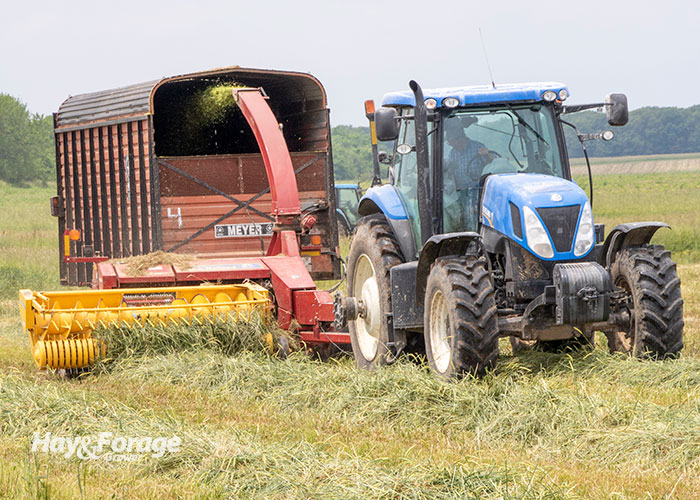Two common cereal harvesting mistakes |
| By Mike Rankin, Managing Editor |
|
|
 For a variety of reasons, winter cereal forages are more popular these days than ever before. In addition to providing a high-quality livestock feed, winter cereals offer many land conservation and soil quality attributes; they also offer a manure-spreading outlet in late spring. Monitoring this trend over the past 10 years, most forage agronomists and nutritionists cite two common mistakes when harvesting winter cereals. One is harvesting the slow-drying forage too wet, while the other is harvesting too late, well after peak forage quality has been reached. Too wet Wet cereal forages, above 65% moisture, are low in water-soluble carbohydrates and are notorious for undergoing a clostridial fermentation. This can occur whether the crop is chopped or harvested as baleage. Clostridial bacteria are responsible for producing the toxin that causes botulism. Although rare, it is a realistic worst-case scenario for cereal forages harvested too wet. A clostridial fermentation is easy to diagnose with fermentation analysis done by a reputable laboratory. Generally, clostridial fermentations are characterized by higher levels of acetic, propionic, and butyric acids. The silage will also have higher ammonia concentrations. Often, but not always, the silage pH will be elevated. Clostridial silages are usually unpalatable to livestock. The silage will have a pungent, unpleasant odor. As a result, dry matter intake will be depressed. Why is clostridial fermentation so prevalent with cereal forages? By nature, winter cereals are cut early and are slow to wilt to an acceptable harvest moisture. For this reason, it’s important to spread the forage out as wide as possible when cutting. This puts more of the wilting crop in contact with the sun, enhancing the dry-down rate. Even with a wide swath, further swath manipulation with a tedder may be needed to speed up drying. Minimizing time from cutting to chopping or making baleage helps preserve forage quality. Too late Winter cereals often get harvested later than originally planned. This occurs for several reasons. First is simply that once cereals reach the boot stage, maturity to reproductive (heading) stages progress rapidly. With this rapid progression comes an equally fast decline in forage quality. It’s not uncommon to see winter rye, for example, go from lactating dairy cow to heifer quality in a matter of days. The rapid decline in quality aligns with a time when there are usually other field operations such as corn planting that require attention. Finally, it seems that the optimum time to cut winter cereals in the spring often coincides with a week of wet weather. The choice then becomes one of delayed cutting or the risk having the crop rained on while it wilts. For high-quality dairy feed, the optimum harvest stage for cereals is mid- to late boot. This is when the flag leaf has emerged and unfolded but before seedheads are visible. The window to hit this stage is small. Neutral detergent fiber (NDF) values should be less than 55% for cereal forages being fed to dairy cows or beef stockers. As is the case with most forage species, if temperatures are cool, optimum forage quality will be maintained longer than if temperatures are warm to hot. Delaying harvest past the boot stage will dramatically boost forage yields, but quality will suffer. In some cases, this may be acceptable if heifers or beef cows will utilize the feed.
|
